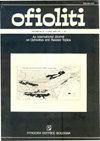伊朗中部主要蛇绿岩的地球动力学背景:来自铬铁矿和伴生岩石中铬尖晶石的证据
IF 1.3
4区 地球科学
Q2 GEOLOGY
引用次数: 22
摘要
在伊朗中部;伊朗中部微大陆(CIM)块的西北部;彩色杂岩的特点是广泛分布的蛇绿岩块。在Nain地区;这些蛇绿岩块;被称为南蛇绿岩;主要由地幔橄榄岩组成。根据野外和岩石学观察以及铬尖晶石的化学性质;在南蛇绿岩中发现了两种类型的铬铁矿。第一种类型在哈尔茨伯尔矿中以铬铁矿斑块的形式出现。铬尖晶石的Cr值[Cr# = 100*Cr/(Cr+Al)]在铬铁矿斑块中为58 ~ 63,在哈尔茨布尔矿中为39 ~ 40。铬铁矿斑母熔体中Al2O3的含量和FeO/MgO的比值表明,cr尖晶石的源岩浆为硼质熔体。其稀土元素模式与深海橄榄岩相似。这些特征表明该区为弧后盆地环境,形成了铬铁矿斑块,以及南蛇绿岩中的黑斑岩和黑斑岩。第二种类型的铬铁矿以透镜(铬铁矿荚)的形式出现在溶质中。这些铬铁矿的Cr尖晶石的Cr值在69 ~ 73之间。这些铬铁矿的铬尖晶石在母熔体中也表现出硼质性质。铬铁矿透镜的这些特征表明它们是在电弧环境下产生的。因此;根据这些铬铁矿透镜体的成因资料,可以提出早白垩世Nain盆地的洋内俯冲作用。晚白垩世Nain地区在弧后环境下的海内裂陷作用形成了一个海洋弧后盆地;铬铁矿斑块和所研究的黑斑岩、黑斑岩可能形成于弧后盆地下地幔。总的说来;野外和岩相观察及部分熔融程度;根据cr#计算;认为这些岩石的成因可以用明渠堆积/岩石-反应混合模式来解释。本文章由计算机程序翻译,如有差异,请以英文原文为准。
THE GEODYNAMIC SETTING OF THE NAIN OPHIOLITES, CENTRAL IRAN: EVIDENCE FROM CHROMIAN SPINELS IN THE CHROMITITES AND ASSOCIATED ROCKS
In central Iran; to the northwest of the Central Iranian micro-continental (CIM) block; the coloured melange is characterized by widespread ophiolite blocks. In the Nain area; these ophiolite blocks; known as Nain ophiolites; are mainly composed of mantle peridotites. Based on field and petrographic observations and on the chemistry of Cr-spinels; two types of chromitites have been recognized in the Nain ophiolites. The first type occurs as chromitite patches within the harzburgites. The Cr number [Cr# = 100*Cr/(Cr+Al)] of the Cr-spinels varies between 58 and 63 in chromitite patches and 39-40 in harzburgites. Calculated amount of Al2O3 and ratio of FeO/MgO in the parental melts of the chromitite patches indicate a boninitic melts for the source magmas of the Cr-spinels. The REE patterns for the studied harzburgites and lherzolites are similar to those from abyssal peridotites. These characteristics suggest a back-arc basin setting for the generation of the chromitite patches as well as of the harzburgites and lherzolites from the Nain ophiolites. The second type of chromitites occurs as lenses (chromitite pods) in dunites. The Cr number of Cr-spinels of these chromitites varies between 69 and 73. The Cr-spinels of these chromitites also show a boninitic nature for the parental melts. These characteristics of chromitite lenses show that they were generated at an arc setting. Therefore; intra-oceanic subduction in the Nain basin in Early Cretaceous can be proposed on the basis of these data on the origin of the chromitite lenses. Intra-oceanic rifting in a back-arc setting generated an oceanic back-arc basin in the Nain area in Late Cretaceous.; The chromitite patches and the studied harzburgites and lherzolites were likely formed in the mantle beneath the back-arc basin. On the whole; the field and petrographic observations as well as the degree of partial melting; calculated on the basis of the Cr#; suggest that the genesis of these rocks can be explained according to a mixed open-channel cumulate/rock-reaction model.
求助全文
通过发布文献求助,成功后即可免费获取论文全文。
去求助
来源期刊

Ofioliti
地学-地质学
CiteScore
2.40
自引率
7.70%
发文量
1
期刊介绍:
Since 1976, Ofioliti provides an international forum for original contributions and reviews in the field of the geodynamics, petrology, geochemistry, biostratigraphy, stratigraphy, tectonics and paleogeography applied to ophiolitic terrains and modern oceanic lithosphere, including their sedimentary cover. Studies of topics such as geodynamics of the mantle, the evolution of orogens including ophiolites and paleoceanography are also welcome
 求助内容:
求助内容: 应助结果提醒方式:
应助结果提醒方式:


